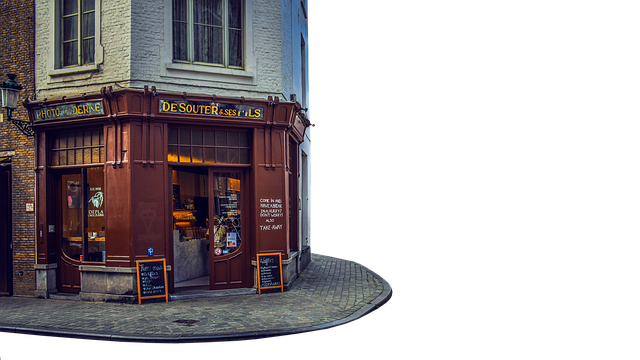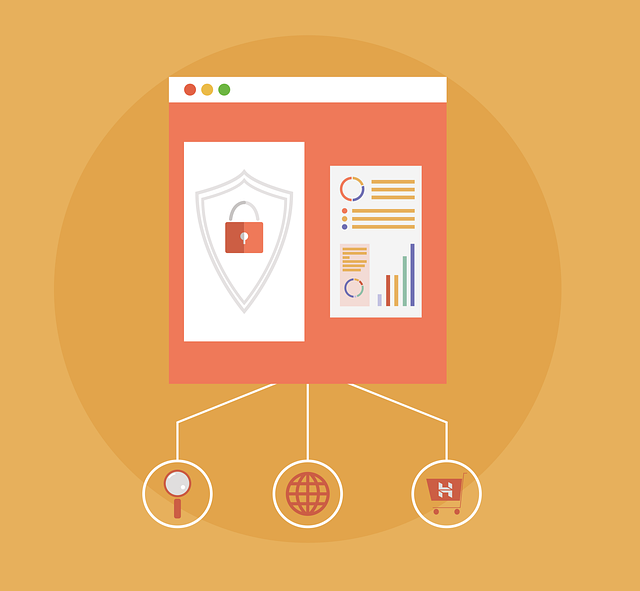An effective ecommerce store design balances user experience and business objectives, guiding customers seamlessly through product discovery, comparison, and checkout. Key elements include:
– Intuitive Navigation: Prominent search bar, organized categories, and easy access to key pages.
– Visual Appeal: High-quality images, detailed descriptions, and customer reviews.
– Usability: Simplifying the checkout process, mobile responsiveness, and security measures like SSL certificates.
– Platform Selection: Choosing a scalable, secure platform (e.g., Shopify, WooCommerce, BigCommerce) that supports SEO optimization and marketing tool integration.
– Optimization: Regular updates based on analytics data to maintain user experience and search engine rankings.
– Mobile Responsiveness: Adapting to different screen sizes for enhanced user engagement and reduced bounce rates.
– Payment Gateways: Secure integration for safe transactions, increasing customer trust and sales.
– Content Strategy: SEO-driven content creation and organization to attract, engage, and convert visitors.
– KPI Tracking: Measuring KPIs like traffic, conversion rates, and average order value for data-driven decisions and continuous improvement.
In today’s digital era, a robust e-commerce website is no longer a luxury but a necessity for businesses aiming to thrive. With online shopping becoming the norm, understanding the intricacies of e-commerce store design is crucial for creating a captivating and functional digital storefront. This article delves into the essential aspects of developing an e-commerce site, from optimizing user experience and performance to integrating secure payment gateways and implementing effective content strategies. By exploring these key elements, businesses can enhance their online visibility and drive successful sales.
Understanding E-commerce Store Design Requirements

Creating an effective e-commerce store design requires a deep understanding of user behavior and business goals. The layout, navigation, and visual aesthetics must be carefully crafted to deliver a seamless online shopping experience that attracts and retains customers. A well-designed e-commerce site should intuitively guide users through the product browsing, comparison, and checkout process, with clear calls-to-action at every step.
Key aspects of e-commerce store design include responsive design for optimal viewing on various devices, high-quality visuals that showcase products accurately, intuitive search functionality, and easy-to-read product descriptions. Incorporating user reviews and ratings can also build trust and influence purchasing decisions. Additionally, integrating secure payment gateways and ensuring data privacy is paramount to fostering customer confidence in online transactions.
Key Elements of an Effective E-commerce Website Layout

An effective e-commerce website layout is crucial for converting visitors into paying customers. Firstly, a clean and intuitive navigation system is essential. This includes a prominent search bar, well-organized categories, and easy access to key pages like ‘About Us’, ‘Contact’, and ‘Help’. Customers should be able to browse products effortlessly, with clear product images, detailed descriptions, and customer reviews enhancing their shopping experience.
Additionally, a seamless checkout process is vital. Simplify this journey by minimizing the number of steps required, auto-filling forms where possible, and providing multiple payment options. Ensure security through SSL certificates and display trust signals like customer ratings and logos of secure payment gateways to reassure buyers. A well-designed e-commerce store should also optimize for mobile use, ensuring a responsive design that adapts beautifully to various screen sizes.
Choosing the Right E-commerce Platform for Your Business

Choosing the right e-commerce platform is a crucial step in building a successful online store. It’s like picking the perfect foundation for your house; it needs to be sturdy, adaptable, and align with your long-term vision. Look for platforms that offer scalability, secure payment gateways, robust customer support, and features tailored to your industry. Popular options include Shopify, WooCommerce, and BigCommerce, each catering to different business sizes and specific needs, such as custom product configurations or integrated accounting software.
Consider your budget, technical expertise, and design preferences. Some platforms provide drag-and-drop builders for intuitive ecommerce store design without requiring coding knowledge, while others offer advanced customization options for developers. Ensure the platform supports mobile responsiveness, SEO optimization, and integration with marketing tools to enhance user experience and drive sales.
User Experience (UX) Best Practices in E-commerce Development

Creating an engaging and effective e-commerce store design hinges on prioritizing user experience (UX). The first step is ensuring a seamless navigation structure—users should effortlessly find products through intuitive categories, search bars, and filters. A clean layout with clear calls to action (CTAs) guides shoppers towards their desired outcomes, whether browsing or making a purchase. Visual elements like high-quality images, interactive features like 360° product views, and video demos enhance engagement, allowing users to better appreciate offerings.
Usability testing is paramount to validate design choices; gathering user feedback reveals pain points and areas for improvement. Mobile responsiveness is another non-negotiable aspect, given the increasing mobile shopping traffic. A well-designed ecommerce store balances aesthetics with functionality, fostering a positive UX that encourages conversions. Regular updates based on analytics data ensure the site remains optimized for both users and search engines.
Optimizing Site Speed and Performance for Better Customer Engagement

In the fast-paced world of e-commerce, where customers have endless options at their fingertips, a slow website can be a significant roadblock to successful sales. Optimizing site speed and performance is crucial for enhancing customer engagement and fostering a positive user experience. A well-designed ecommerce store should load pages swiftly, ensuring visitors stay longer and are more likely to make purchases.
There are several strategies to achieve this. Compressing images, minimizing HTTP requests, leveraging browser caching, and utilizing content delivery networks (CDNs) can significantly speed up page load times. Additionally, a mobile-responsive design is essential, as the majority of online shopping occurs on smartphones and tablets. By prioritizing fast loading times and a seamless user experience across all devices, ecommerce store designs can boost engagement, reduce bounce rates, and ultimately drive more conversions.
Mobile Responsiveness: Designing for Multiple Devices

In today’s digital era, mobile responsiveness is no longer an optional feature for any successful e-commerce store design. With a vast majority of online shoppers using smartphones and tablets, ensuring your website adapts seamlessly to different screen sizes and resolutions is pivotal. Responsive design not only provides an optimal user experience but also significantly boosts conversion rates by reducing bounce rates and increasing engagement.
A well-executed mobile responsiveness strategy involves creating flexible layouts, optimized images, and media queries that detect device characteristics. This allows for easy navigation, clear product displays, and streamlined checkout processes across various devices. As a result, e-commerce stores become more accessible, appealing to a broader audience, and better positioned to compete in the dynamic online marketplace.
Integrating Secure Payment Gateways and Shopping Cart Functionality

In the realm of e-commerce website development, seamless integration of secure payment gateways and shopping cart functionality is paramount for a successful online store design. This critical component ensures a smooth and safe transaction process, fostering customer trust and boosting sales conversions. Modern ecommerce platforms offer a variety of robust, industry-standard payment gateway options, enabling businesses to choose the solution that best aligns with their operations and target audience.
Effective implementation involves not just installing the technology but also designing an intuitive user experience. A well-designed shopping cart should provide customers with clear product visualizations, detailed order summaries, and a straightforward checkout process. This optimizes the customer journey, reduces cart abandonment, and ultimately enhances overall ecommerce store performance.
Content Strategy and SEO for Enhanced Online Visibility

A robust content strategy is pivotal for an ecommerce store’s online success, acting as a compass guiding potential customers through the digital marketplace. It involves meticulously crafting and organizing product descriptions, blog posts, and other forms of media to not only attract but also engage and convert visitors into loyal buyers. By incorporating relevant keywords naturally within this content, you enhance search engine optimization (SEO), making your ecommerce store more visible on popular search engines like Google. This strategy ensures that when potential customers search for products or services related to your niche, your website ranks higher in search results, thereby increasing organic traffic and sales opportunities.
Furthermore, a content-rich approach allows you to establish your brand as an authority in the industry. Regularly updating your site with valuable information, such as product reviews, how-to guides, and industry trends, not only keeps visitors engaged but also signals to search engines that your website is active and trustworthy. This, in turn, improves your ecommerce store’s overall online visibility and drives more qualified leads, ultimately contributing to sustained growth and profitability.
Measuring Success: Key Performance Indicators (KPIs) in E-commerce Development

Measuring success is a fundamental aspect of e-commerce website development, allowing businesses to understand their performance and make data-driven decisions. Key Performance Indicators (KPIs) are essential metrics that provide insights into various aspects of an online store’s operation. These KPIs can range from basic metrics like website traffic and conversion rates to more nuanced figures such as customer lifetime value and average order value. By tracking these indicators, e-commerce developers and owners can gauge the overall health of their store design and user experience.
For instance, a well-designed ecommerce store should see consistent growth in its customer base and a high conversion rate, indicating that the site’s navigation, product presentation, and checkout process are optimized for user engagement. Additional KPIs like bounce rate and time spent on site offer further insights into how effectively the website design caters to visitors’ needs. These metrics collectively help identify areas of improvement and ensure the ecommerce store remains competitive in a dynamic digital landscape.
